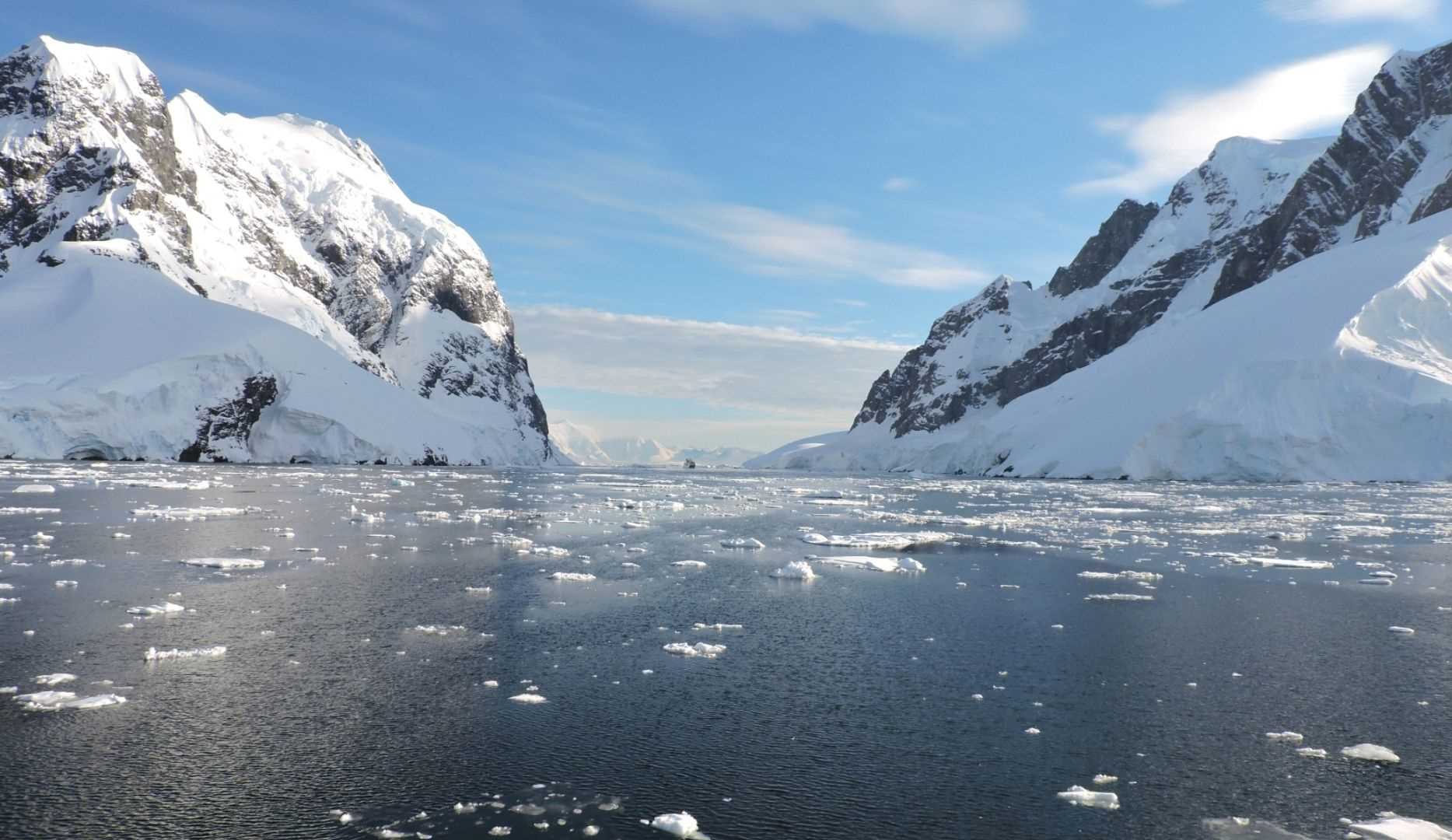Early this morning we entered the south end of the Lemaire Channel. It is believed by some to be the most beautiful stretch of water in the Antarctic Peninsula. Located between the peninsular mainland and Booth Island, the channel measures about one mile wide by about seven miles long. It is a waterway formed by a geological fault, eroded and widened by intense glacial action over time. Steep snow-covered mountains on either side presented a wonderful geological display for our exploring guests. Clear conditions that day only sharpened the experience!
After breakfast, National Geographic Orion anchored in Port Lockroy, a natural harbor of Wiencke Island. This is a protected anchorage located between Anvers Island and the peninsular mainland. It is truly a beautiful site, surrounded by snow-capped mountains, massive snow fields, and glaciers. The main point of interest here is the restored old British Antarctic Survey hut located on tiny Goudier Island. The structure has been converted into part visitor’s center, part historical museum.
A long-term study has been going on here at the station to chronicle the effects of human habitation upon gentoo penguins and snowy sheathbills. We’re happy to announce they seem to be doing extremely well around the buildings of the station. In addition, we were able to go ashore on a rocky outcrop at the northwest end of Wiencke Island near Jougla Point. There we saw gentoo penguins nesting and several blue-eyed shags, as well as an old ship-based whaling station. A field of whale bones litter the shore in one area but were mostly covered by a thick blanket of snow, making them difficult to see. This included the partial remains of a great whale!
In the early afternoon the ship sailed into Dallmann Bay, located in the Palmer Archipelago between Anvers Island and Brabant Island. We hoped to encounter humpback whales in this water way as it is often a good place to find krill shoals. We were not disappointed. The afternoon and early evening were spent carefully traversing this huge body of water, with humpback whales spread all about the area.
We sighted individual whales, mother whales with calves, and small groups of whales feeding. But the highlight of whale watching was surely our encounters with several small groups of Type-B killer whales. They were likely part of a single pod but had spread out to hunt penguins. Once we completed the transit through Dallmann Bay, we reentered the Drake Passage to begin our way back up to Ushuaia.









